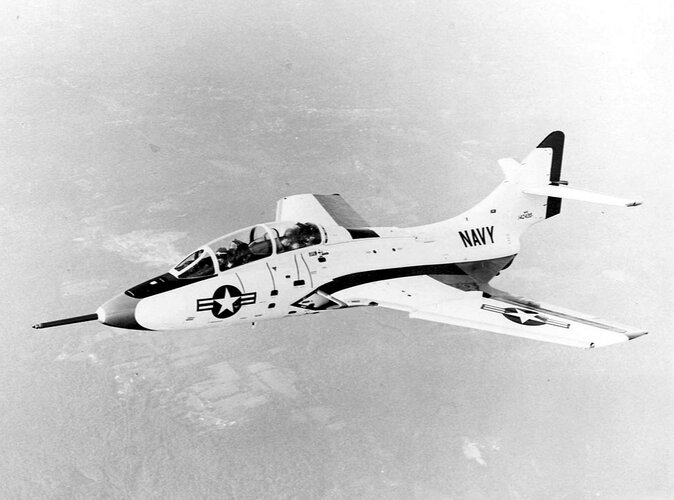- Joined
- 3 January 2006
- Messages
- 1,101
- Reaction score
- 700
The Hunter seems to have been the only swept wing type that was ever suitable for spin recovery training, the tooling was paid for and the Buccaneer’s Spey 101 was reliable, economic and possibly cheaper to produce than the Adour, would a Spey Hunter with a stepped tandem style cockpit have been a viable alternative to the Hawk T.1? Think of a Hawk forward fuselage grafted to a Hunter with larger intakes for the Spey’s higher mass flow, possibly a higher tail because of the higher canopy and an unmodified late Hunter wing? Obviously, there are center of gravity concerns, as the Hunter had a very centrally mounted engine with a long jet pipe. As I recollect, the unbuilt tandem seat alternative to the eventual side-by-side Hunter T.7 had a very long fuselage and I’m not sure if an aft fuselage extension or ballast would have been involved? In the end, side-by-side seating was in vogue at the time of the T.7 and tandem alternative was probably always feasible. Stepping the seating would help with CoG, as well as removing the single Aden canon of the T.7.
As I see it, a stepped tandem cockpit Hunter with the Spey 101 would have had much lower development costs than the Hawk, better performance, lower production costs and earlier availability which would have gotten it ahead of the competing Alphajet as well as the worst inflation of the 1970s.
As it was, the Hawk was an export success, but the wing was more of a compromise than an optimal design. The high wing loading lead to a leading edge slat for the navalized American T-45, giving it twitchy low speed handling and making this carrier deck trainer harder to land than the Super Hornet. And again, the Hawk, like other swept wing types, excepting the Hunter, was incapable of spin recovery training.
As I see it, a stepped tandem cockpit Hunter with the Spey 101 would have had much lower development costs than the Hawk, better performance, lower production costs and earlier availability which would have gotten it ahead of the competing Alphajet as well as the worst inflation of the 1970s.
As it was, the Hawk was an export success, but the wing was more of a compromise than an optimal design. The high wing loading lead to a leading edge slat for the navalized American T-45, giving it twitchy low speed handling and making this carrier deck trainer harder to land than the Super Hornet. And again, the Hawk, like other swept wing types, excepting the Hunter, was incapable of spin recovery training.

